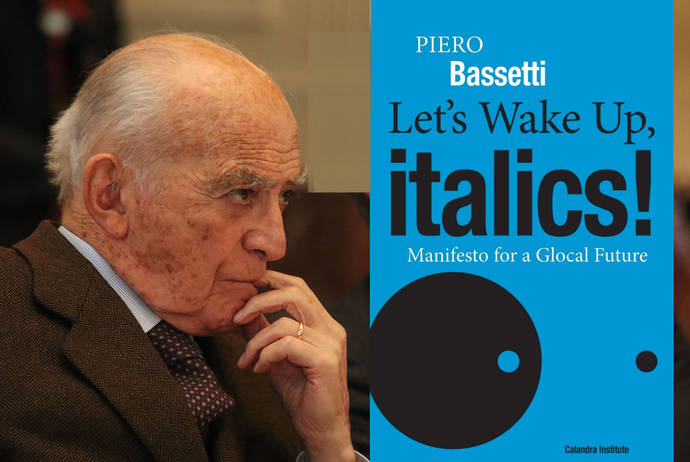L’idea di poter dimagrire mangiando, e ancor di più di poter dimagrire mangiando il proprio piatto preferito potrebbe sembrare solo un sogno. In realtà tutto dipende da cosa si mangia ed in particolare dal come si mangia e in che orario della giornata. Che la dieta Mediterranea sia una dei migliori regimi alimentari in assoluto è risaputo, ma non è detto che tutti, soprattutto fuori dall’Italia, sappiano come cucinarla, come dosarla, come trarne il massimo dei benefici per il nostro organismo. A volte quello che manca è la vera conoscenza della tradizione della cucina mediterranea sia nella selezione degli ingredienti che nelle modalità di preparazione.
Il sogno di un maestro pizzaiolo
Chef Pasquale Cozzolino questa tradizione la conosce, con questa tradizione c’è cresciuto. La sua passione per la pizza nasce proprio nella patria della pizza, Napoli, quando da piccolo attendeva con ansia il giorno in cui la mamma lo avrebbe portato a mangiare il suo piatto preferito: “Quando ero piccolino mia mamma mi portava a mangiare la pizza una volta alla settimana”, ci ha raccontato, “io mi incantavo a guardare i pizzaioli che facevano la pizza. Volevo mangiare la pizza tutti i giorni, anche se non ci era concesso. Ho sempre sognato di fare il pizzaiolo per poter mangiare una pizza al giorno!”
E questo sogno Pasquale lo ha realizzato. È oggi un pizzaiolo affermato, Executive Chef di uno dei ristoranti italiani più in voga a New York, Ribalta, ed ha anche coronato il suo sogno di mangiare una pizza al giorno grazie alla sua speciale dieta. L’idea è nata da un concreto bisogno di perdere peso: “La dieta della pizza per me è iniziata come un’esigenza personale. Avevo messo su un po’ di chili e dovevo perderli.Per me che mangio spesso e ho sempre attorno a me del cibo essendo uno chef, le solite diete mi facevano sentire in una specie di gabbia. Mi sono quindi consultato con un mio amico, il Dott. Giuseppe Moscarella che è un biologo e nutrizionista di Napoli, consulente e dietologo anche per squadre di calcio. Mi raccontò di come funziona il corpo umano, e di come sfruttare i momenti cosiddetti di super burn per acquisire più calorie in quei momenti della giornata che però l’organismo brucia in fretta. E poi mi chiese quale fosse il mio piatto preferito. Così la pizza è stata inclusa come l’happy item della mia dieta”.
Cozzolino è riuscito così a perdere 100 pounds (50 Kg), in nove mesi, e dopo aver rilasciato un’intervista al New York Post sulla sua esperienza, la notizia della dieta della pizza ha iniziato a rimbalzare tra i media americani e adesso tutti ne stanno parlando. Nel 2016 è stata la terza dieta più ricercata online. La crescente popolarità della dieta e l’attenzione mediatica che si è concentrata sullo chef napoletano ha attirato l’attenzione della casa editrice americana Penguin Random House che gli ha commissionato la scrittura del libro “The Pizza Diet - How I Lost 100 Pounds and You Can Too!”, che è diventato un grande successo.
Ma cosa rende questa dieta diversa dalle altre e qual’è la pizza che si può mangiare ogni giorno e mantenersi in forma?
The Pizza Diet
La dieta prevede di consumare i prodotti più calorici e lunghi da digerire come i carboidrati complessi nella prima parte della giornata. Appena svegli il nostro organismo non brucia niente perchè è ancora nella fase sleep, ma poi inizia ad accendersi come un motore e va velocissimo. La colazione della Pizza Diet è quindi molto abbondante ma preparata solo con prodotti di eccellente qualità. Cereali, frutta, latte di mandorla, volendo anche un uovo.
A pranzo verso le dodici arriva il momento della pizza accompagnata da un’insalata. A questo punto si è già assunto il 70% del fabbisogno calorico giornaliero. A cena si mangiano solo proteine preferibilmente magre con un’insalata o verdura. L’ultimo pasto va consumato verso le 6pm.
Qual’è però la pizza che si può mangiare? E come la si deve preparare?
Pizza rigorosamente napoletana
La pizza è quella classica napoletana preparata con un impasto di 220 grammi di farina, acqua, sale e lievito, pomodoro e un po’ di mozzarella e basilico, senza aggiunta di grassi e senza zuccheri. La tipica Margherita. Se cucinata correttamente, questa pizza è un pasto completo e molto nutritivo, 570 calorie. Il segreto per rendere questa pizza leggera è il non eccedere con i condimenti e con con l’olio. Gli ingredienti vanno bilanciati. Inoltre la particolarità della pizza di Cozzolino è che idrata di più rispetto alla norma. “La pizza napoletana di solito idrata dal 60% al 70%, la mia arriva all’80%, quindi c’è molta più acqua. I tempi di fermentazione sono poi lunghissimi e questo permette al glutine di essere più digeribile.”
Non è quindi pensabile di poter mangiare ogni giorno una qualunque pizza, specie quelle preparate nei fast food americani che sono insane ed ipercaloriche. “In America spesso la pizza è considerata junk food”, ci ha detto lo chef, “il messaggio per l’americano non è ‘mangiati una pizza qualunque’, ma mangiati questa pizza preparata secondo i criteri della dieta mediterranea.”
La pizza tradizionale napoletana è quasi un pezzo artigianale e deve mantenere le sue caratteristiche specifiche. Oggi la pizza sta diventando sempre più spesso materia di chef, ed il rischio è che l’eccessiva sperimentazione faccia perdere il gusto originario della pizza. “Esagerando con i condimenti, si perde il senso della pizza”, afferma lo chef, “diventa poi quasi un piatto che regge tutto quello che c’è sopra. La parte importante della pizza è invece l’impasto. La mia ricerca da chef sulla pizza si concentra sull’elaborazione di lievitazioni sempre più buone, qui sta la modernità di un piatto che deve mantenersi tradizionale.”
Dietro alla dieta della pizza c’è un concetto biosofico, in bilico tra la filosofia e la biologia. Una volta dimagriti è infatti importante che questa dieta diventi un vero e proprio regime alimentare, perchè non si perde peso facendo una dieta, o perlomeno non a lungo termine, e perdere peso non è l’obiettivo ma l’effetto. L’obiettivo è cambiare le proprie abitudini ed abbracciare uno stile di vita più sano per il proprio organismo.
Inoltre la pizza per Pasquale non è solo un buon cibo ma anche un simbolo di convivialità: “La pizza è il cibo degli dei. La sua forma, il cerchio, rappresenta la fratellanza, l’abbraccio. È un cibo che simbolizza la socialità.”
La missione del libro
Il libro dello chef non è solo un cookbook classico con delle ricette e con la dieta consigliata. C’è proprio dietro tutta la filosofia del modo in cui si deve mangiare, da come comprare i prodotti al supermercato a come leggere gli ingredienti dietro le etichette. Inoltre il libro racconta la storia di Pasquale Cozzolino dai suoi esordi a tredici anni quando preparò la sua prima pizza insieme a Gaetano Esposito, storico maestro pizzaiolo discendente di Raffaele Esposito uno degli inventori della pizza, alla sua avventura newyorchese che gli ha regalato non solo una carriera di successo ma anche una famiglia- Pasquale è sposato con una donna americana dalla quale ha avuto due figli.
La missione del suo libro è anche fortemente educativa: “Sono cresciuto con l’idea del mangiar bene, me l’ha trasmessa mia mamma. La mia missione, avendo anche due bambini americani e vedendo quello che mangiano, è di educare la gente a mangiare bene, andando in televisione o nelle scuole a fare food culture. Ho già fatto una cosa al Borough of Manhattan Community College, un panel con 50 studenti, per parlare di alimentazione. Ricevo centinaia di mail al giorno di gente che segue la dieta e mi chiede consigli.”







































